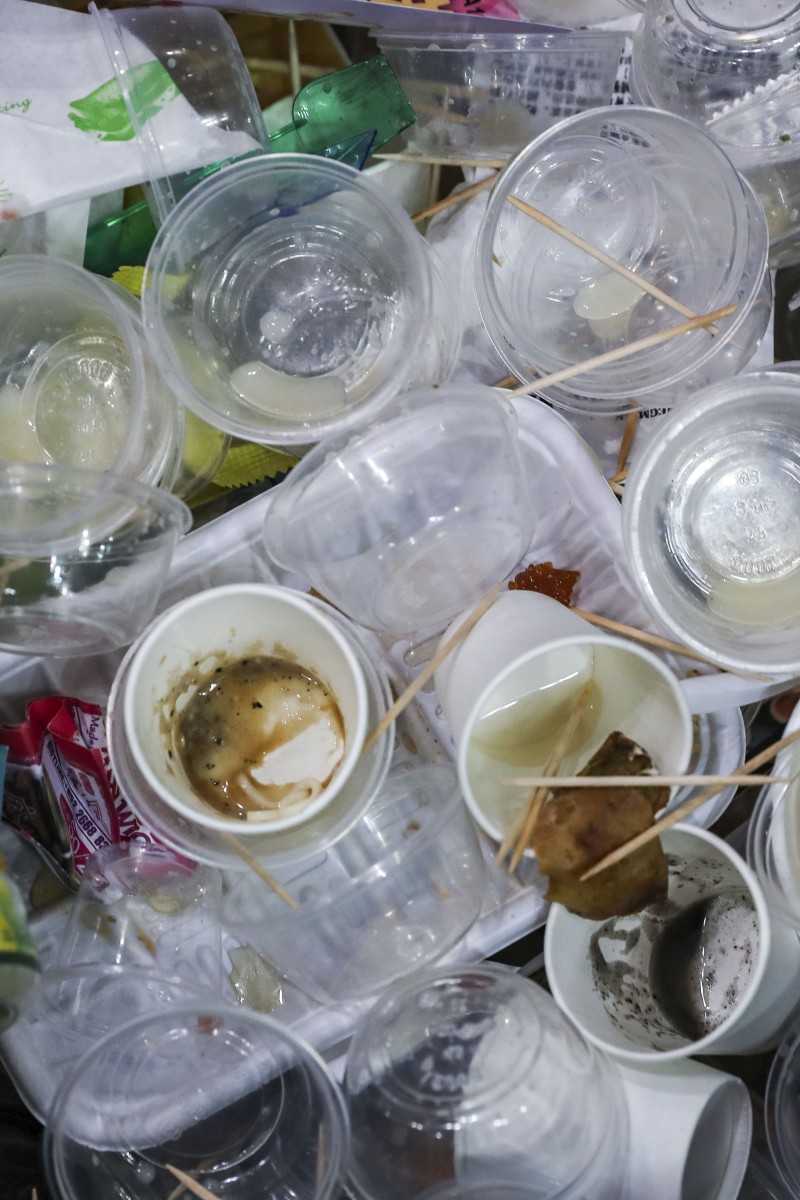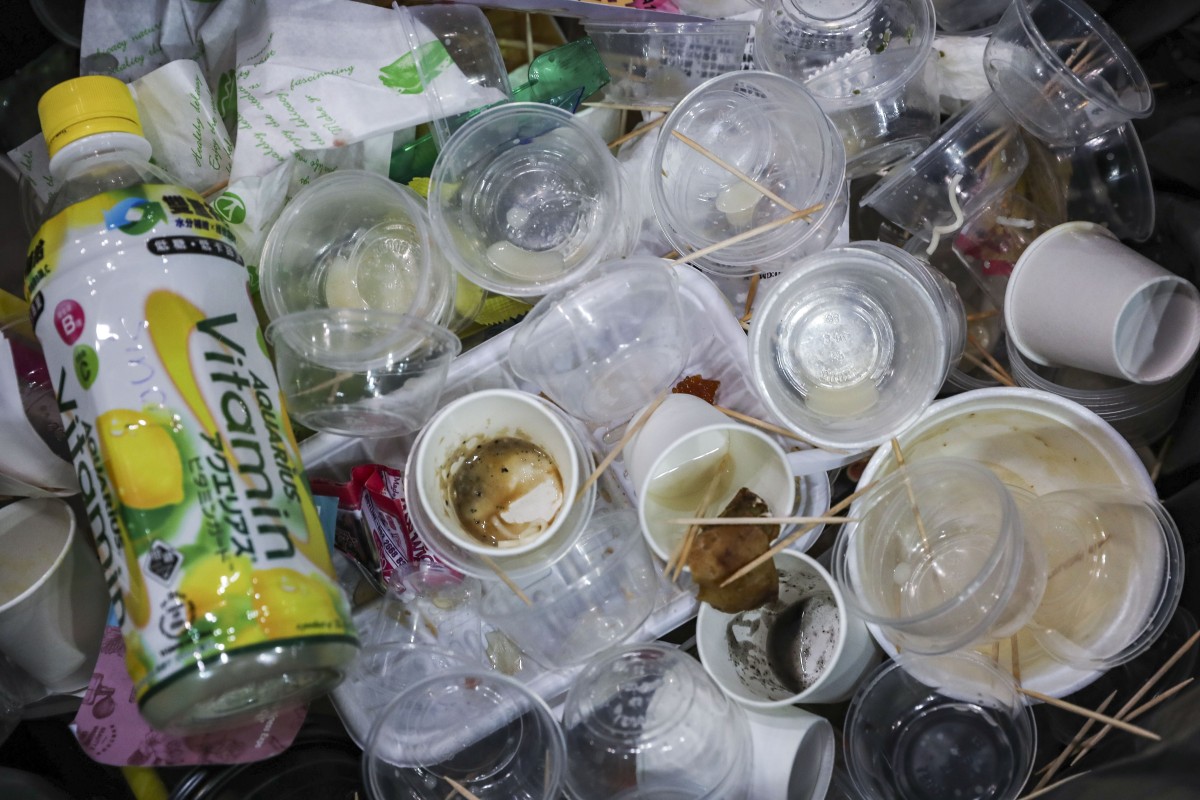
Hong Kong's plastic rubbish is so widespread - it's been found in the Mariana Trench - we need to take drastic action
The recent discovery of plastic waste in the the deepest part of the Pacific Ocean, shows we are trashing our planet at an increasing rate
 Single-use plastic is discarded on the second day of the HKTDC Food Expo and International Tea Fair at the Hong Kong Convention and Exhibition Centre in Wan Chai.
Single-use plastic is discarded on the second day of the HKTDC Food Expo and International Tea Fair at the Hong Kong Convention and Exhibition Centre in Wan Chai. Last month, the BBC reported that an American explorer had successfully broken the record for the deepest ocean dive, far down into the Pacific Ocean’s Mariana Trench. What did they find down there? Plastic – from us.
Plastic pollution in Hong Kong remains a major issue. Greenpeace East Asia reports that more than 17 million pieces of plastic are flushed into the Shing Mun River in Sha Tin every year. Given the severity of this issue, the Hong Kong government’s current policies are not enough to tackle the various types of plastic that are still heading to the landfills or the ocean every single day. There is a need to implement policies that address more types of plastic pollution, particularly disposable items in the food industry.
According to the Hong Kong government, the current Plastic Shopping Bag Charging Scheme in effect since April 2015 has prevented over 510 million plastic bags reaching landfills. This is a welcome sign of how economic deterrents (charging 50 cents for a bag) can induce behavioural changes, such as encouraging shoppers to bring their own reusable bag. In addition, the current scheme also bans free plastic bag distribution at retail outlets, which has vastly expanded in scale and number of retailers since its trial in 2009. But this policy is only the tip of the iceberg in the ongoing fight to curb the 2,000 tonnes of plastic still headed for the landfills each day (according to Greenpeace in 2017).
The takeaway food industry is one of the largest culprits for plastic pollution and it has yet to be tackled. There is no large community-wide action to curb single-use plastics. One example is the growing popularity of drinks like bubble tea, which almost always come with a large disposable straw.
Perhaps it is worth considering whether monetary incentives, like the plastic bag levy, could be applied to reduce single-use plastics like styrofoam boxes and cups. It would be interesting to see whether behaviour would change if it was in the customer’s best interest to bring their own cutlery or lunchbox or maybe even return cutlery for monetary gain.
However, this would come with a whole host of other considerations. For example, how much should customers be charged for using single-use plastics? What if they simply can’t afford it? How would food companies deal with the loss of unreturned cutlery? Moreover, it seems that pure monetary incentives cannot make a real impact unless they are coupled with action to raise awareness among consumers about the importance of reducing plastic.
The current system adopts an “out of sight, out of mind” mentality. Big changes are always difficult to implement, but given the urgency of the situation, action needs to happen soon.